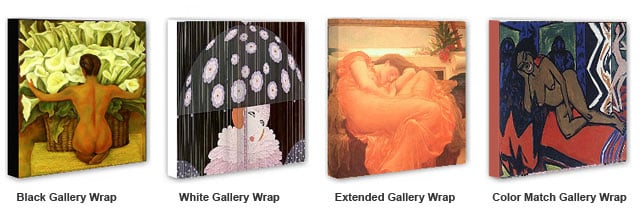The Wave 1896 (La Vague) By William-Adolphe Bouguereau
William Adolphe Bouguereau painted the Wave (or “La Vague”) in 1896. It is the artist's most recognizable and controversial oil painting.
What type of artist was William-Adolphe Bouguereau?
Bouguereau was a leading painter of the French Academic school. With influences including Neo-classicism and Realism, his art often depicted mythological subjects with precise attention to detail.
In 1881, Bouguereau became president of the Société des Artistes Français. Due to this position, he enjoyed significant influence over the Paris Salon. Bouguereau consequently wielded substantial power over the French art world as a whole.
La Vague was Bouguereau’s submission to the 1896 Paris Salon. It represented the classical approach and subject matter frequently seen in other William Bouguereau paintings. Indeed, classical images such as Botticelli’s Birth of Venus and Greco-Roman sculpture significantly influenced.
While there may be parallels with famous Wave depictions (such as Hokusai’s The Great Wave), the western academic tradition was Bouguereau’s primary influence. Gustave Courbet’s 1869 depictions of The Wave could have also influenced Bouguereau. Whether Bouguereau saw the Courbet artworks remains unknown, however.
Stylistically, Bouguereau despised the new avant-garde movements revolutionizing French art at the time. He particularly disliked the Impressionist style (championed by Claude Monet).
Despite this opposition to new approaches, La Vague departed considerably from traditional representations of Venus. Stripped back to its most basic narrative elements (Venus and the sea), the lone woman is the sole focus of the composition.
Seated gracefully on the sand, she almost floats above the encroaching tide. Her gaze directly engages the viewer, producing an incredible feeling of immediacy.
Why did Bouguereau paint The Wave?
Today, La Vague enjoys celebrity as the famous nude painting in the western tradition. Fascinated by the female form, Bouguereau depicted Venus and bathing women on many occasions.
Earlier William Adolphe Bouguereau paintings in the same vein included After the Bath (1875), Biblis (1884), and The Bathers (1884).
The “real” woman in The Wave was Odile Charpentier. Charpentier modeled for Bouguereau several times, serving as a creative muse and confidante.
Amongst William-Adolphe Bouguereau's art, The Wave celebrates stunning accuracy and realism. A master colorist and draftsman, Bouguereau took great pride in his ability to recreate the natural world faithfully.
He often spent hours sketching seemingly tiny and insignificant details (for instance, a hand or ankle), meticulously building up the final piece. Reflecting on this careful working method, Bouguereau undertook a small graphite study and a preparatory oil study before completing La Vague.
While Bouguereau depicts the woman’s body in incredible detail, his painting pays equal attention to the waves and the sea. One can almost feel the ocean’s spray and foam, with the moody horizon visible in the distance.
How much are Bouguereau's paintings worth?
As a classic Bouguereau nude, The Wave sold for over $700,000 in 1999. Auctioned by Christies, the painting massively exceeded its guide price of $250-350,000.
The following year, Christies auctioned another artwork, La Charité (1878), for a cool $3.53 million.
William Adolphe Bouguereau's paintings haven’t always performed this well, however. The artist has gone in and out of fashion over the years. In 2019 La Jeunesse de Bacchus went up for auction at Sotheby’s. Despite the staggering guide price of $35 million, the painting failed to sell.
Enjoy William Adolphe Bouguereau paintings from our extensive collection of famous nude paintings.
Reproduction oil paintings are 100% handpainted by one of our professional resident artists.
We offer a 100% money back guarantee or replacement service. If for any reason you are dissatisfied with your painting please contact us within 7 days of receipt, advising the reason you are unhappy and we will provide you with all the information you need for its return or replacement.
We ship free to anywhere in the world via FedEx or DHL expedited service with online tracking.
Your painting will be shipped rolled in strong plastic tubing, ready for stretching and/or framing locally. This is the conventional method of transporting hand-painted oil on canvas. Learn more about how your painting is shipped.
We are able to offer a framing service intercontinental U.S. Please contact us if you would like a quotation. Alternatively, should you prefer, we can recommend a framer in your area.
Notes About Your Painting
Please note that replica oil paintings are finished with an additional 10cm (4") of extra canvas on all sides, allowing ample surplus canvas for stretching and framing.
Recently Viewed:
Cannot Find What You Are Looking For?
Reproduction Gallery Information
Customer Service
(Send Us A Message)
Tel: (503) 937 2010
Fax: (503) 937 2011







